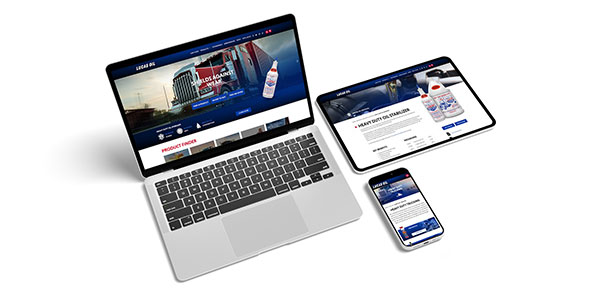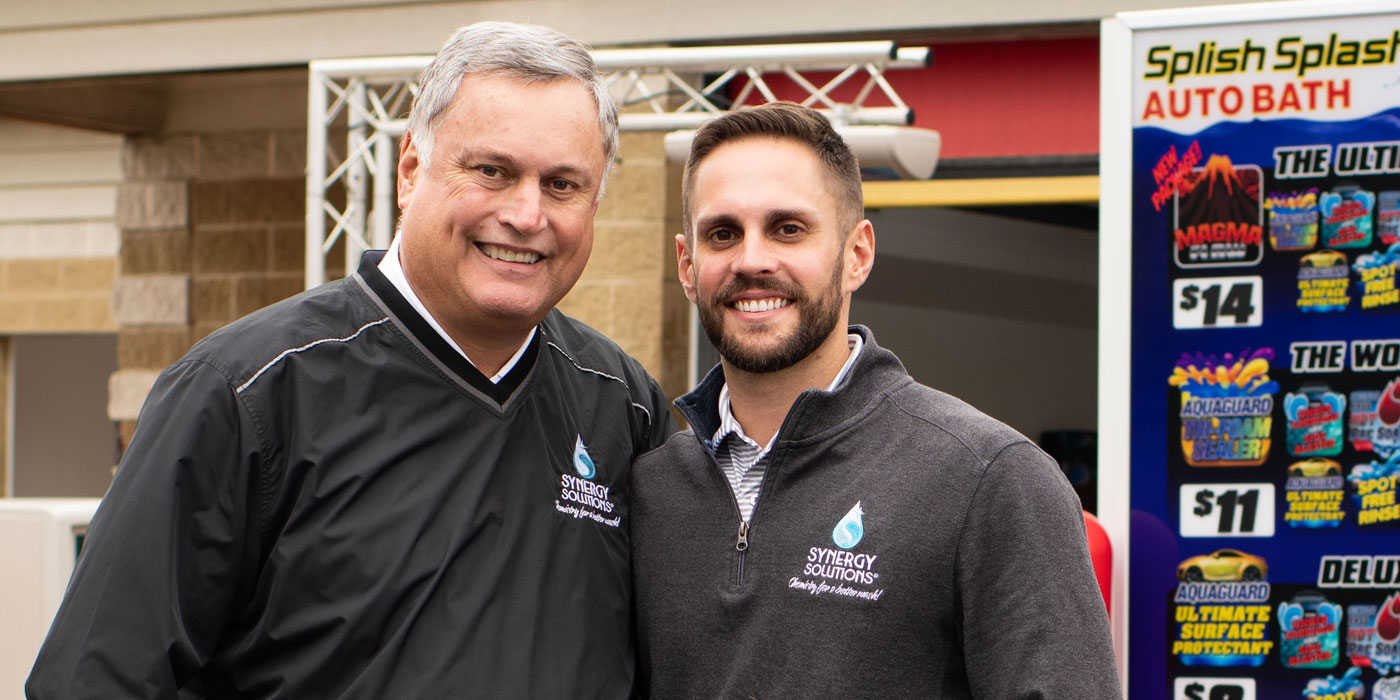Imagine: A customer takes his car to the local wash, pays an employee to thoroughly clean the vehicle and then sits back and relaxes while entrusting the cleanliness of the car to that business. Now, imagine that once the car has been washed, the customer opens the door, puts the keys in the ignition and starts to turn onto the street while peering through the windows for any oncoming traffic. But wait. The customer notices a smear on the front windshield. And oh, is that a bug plastered right in the center of the driver-side window? Immediately he starts to question if the car was even cleaned at all.
The importance of crystal clear results
A glass cleaning service can make or break a customer’s feelings about a car care business. Although the overall vehicle might be squeaky clean, a smudge or leftover residue on a customer’s windows, especially the windshield, can signal a lack of detail and professionalism.
“There is nothing worse than leaving a carwash with a streaky window,” asserts Juliette Silver, CEO of Panaram International Trading Co. Inc. “[Customers] don’t remember the body; they don’t remember the wheels as much; they remember when they get into the car and they see the windshield. If the windshield has any kind of film or streak, or is not completely glossed to a high shine, that is what they are going to remember; and that might cause them to not want to go back to that carwash again.”
Shawn Rowan, vice president of sales for Ardex Laboratories Inc., adds that for the most part, the windshield “drives the customer’s response,” explaining that when customers see the windshield is dirty, they will most likely think, “Hey, it’s time to get a carwash.”
Silver suggests having a “checker” at the end of the wash process to go through the entire car to make sure all the windows “are brought to a shine,” adding that the checker will not let the car be returned to the customer if there is any wax or film on the windows.
To ensure a high-shine finish and, most importantly, happy customers, using the right products and following the best practices are crucial.
The right glass cleaning products for a spotless finish
When it comes to selecting a glass cleaning product, keeping the customer in mind is key, says Rowan, adding, “You want to make sure the products are user friendly.” In order to ensure customer satisfaction, glass cleaner manufacturers are making their products as safe as possible.
“One of the most important trends [is] just making products that are safe and do not have any harsh chemicals or odors,” states Silver. “I feel the trend is definitely going to be products [with] very little odor and very little harsh, strong chemicals added to them.”
When selecting a product, carwash owners and operators should consider what their customers complain about most when getting their glass and cars cleaned. Rowan notes that one of the biggest complaints he hears in regards to glass cleaning is nicotine on the inside of a car and bugs on the outside of a car.
“You should always use a product that is very active at removing nicotine and things of that nature from the glass,” Rowan explains. “That is mostly the biggest complaint that I hear in the industry, that [carwashes] are trying to remove the nicotine that is stuck from people smoking in the vehicles and things of that nature. On the outside, the biggest complaint is removing bugs from the windshield.”
Glass cleaning products typically are ammonia-based or contain no ammonia. Those with this chemical compound are said to dry quicker than those that do not contain ammonia. However, many customers have complained of a pungent odor when certain ammonia-based products are used. To help fight the stench, manufacturers are starting to consider unpleasing smells when crafting new cleaning formulas. In fact, continues Rowan, many professional products, particularly those used in tunnel applications, incorporate sweet-scented fragrances.
Furthermore, in addition to transforming a stinky smell to an aromatic scent, carwash owners and operators can generate happier customers by selling their glass cleaning products, suggest Silver. “We feel that if customers love the way their glass looks, which is one of the biggest problems that carwashes have, when they come out of the carwash they would be interested in buying the product.” This is a great way to add a little extra revenue by selling the product straight to the customers, in addition to offering them high-quality, glass cleaning services.
It’s all about the technique
Accomplishing the ultimate shine on windows can be a daunting task for any car care professional. And, some techniques might work better in certain situations than others. However, there are a few general and effective practices every car care professional should know. One of the biggest factors is the towel.
A high-quality towel versus a poor-quality towel could be the sole component behind spotless glass. Cheaper towels, explains Silver, could leave behind lint and/or other particles and lessen the clarity of the glass.
“The challenge is that frequently the lint and streaks are only visible with the light at a certain angle, such as driving into the sun,” asserts Nathan Iverson, director of sales for Hi-Tech Industries. “That’s why cloth and glass cleaner [selection] is important as well as for [an] inspector to carefully inspect glass at multiple angles and redo [the cleaning process] if necessary prior to releasing the car to the customer.”
When it comes to selecting a type of towel, Iverson suggests microfiber, adding that in the last few years there has been a shift from cotton to microfiber. He asserts that the main advantages of this type of towel include high performance, low lint, no break-in period and microfiber is readily available. Yet, despite these benefits, microfiber is not without its flaws.
“The initial migration to microfiber was basically limited to terry-style, which mimicked the texture of cotton towels that operators were used to using,” states Iverson. “The negative with terry-style textiles (even microfiber) is that it tends to leave lint. Microfiber lint can actually bond to the glass and be difficult to remove. Savvy operators are now using waffle-style microfibers, which mimic the performance and lint-free quality of cotton surgical towels, which have fallen out of favor because of increasingly short supply.”
Furthermore, notes Rowan, you have to turn microfiber towels a little more frequently because even though they hold the dirt, they can also pull the dirt and cause streaks. “Make sure when you are using the microfiber you leave a clean surface on the vehicle at all times,” he advises.
Clean towels, regardless of the type, are essential for optimal quality. “[Carwashes] should keep their window towels separated from their body towels at all times,” says Rowan. “Do not wash body towels with window towels.” He adds that if using a towel to dry the exterior, do not use that same towel to do the windows, and vice versa.
When washing the towel, Silver recommends using a high-efficiency washing machine or an industrial washing machine to remove any extra chemicals that might be stuck in the towel. “If the towels are not thoroughly rinsed and the products are not thoroughly rinsed off the towel, it will definitely leave some kind of film on the window,” she says.
Additionally, a color-coding system can help avoid the chances of using a towel for glass cleaning that was being utilized for different services, which according to experts interviewed for this article, can cause streaks, grime, wax buildup and other residue to stick to the glass.
In addition to proper towel management, other effective techniques include saturating the towel in the glass cleaning product over using a trigger bottle. Simply spraying the cleaner will move the dirt around. Furthermore, properly train employees on best methods for glass cleaning.
Instilling the best techniques will result in the best possible shine, leading to happy customers and higher profits. After all, concludes Silver, “If the glass is not perfect, then without a doubt people are going to remember that.”
Sidebar: Quick guide to effective glass cleaning
Iverson offers insight into what he feels are the primary factors that can impact the quality of a glass cleaning service.
- Type of towel used: Best for low to no lint results include waffle-style microfibers, microfiber glass cloths and surgical towels. Terry-style towels dry effectively (both cotton and microfiber), but tend to leave lint.
- Cleanliness of the towel: If the towel is dirty and soiled, it does not matter what kind of towel or what type of glass cleaner you use, it will leave the glass streaked and dirty. Dirty cloth equals dirty glass.
- Technique: Navigate the cloth over the glass in a grid or “cut-the-grass” pattern whereby the technician uses the same leading edge of the cloth over the whole window in a back and forth motion, similar to cutting the grass, that continually traps dirt and contaminants under the cloth. Note: Changing the leading edge of the cloth at the end of each pass may result in the release of lint and/or contaminants onto the glass.
- Type of glass cleaner used: While effective, ammonia-based glass cleaners have a perception of harming tinted windows. This is only the case in rare situations, and ammonia-based glass cleaners are acceptable from a technical standpoint, if not from a perception standpoint. Non-ammonia glass cleaners are also quite adequate when used in conjunction with a properly selected, clean towel, as indicated above. Since nearly all modern glass cleaners (ammonia-based or otherwise) are competent performers, technique and towel selection nearly always trumps chemical selection.














